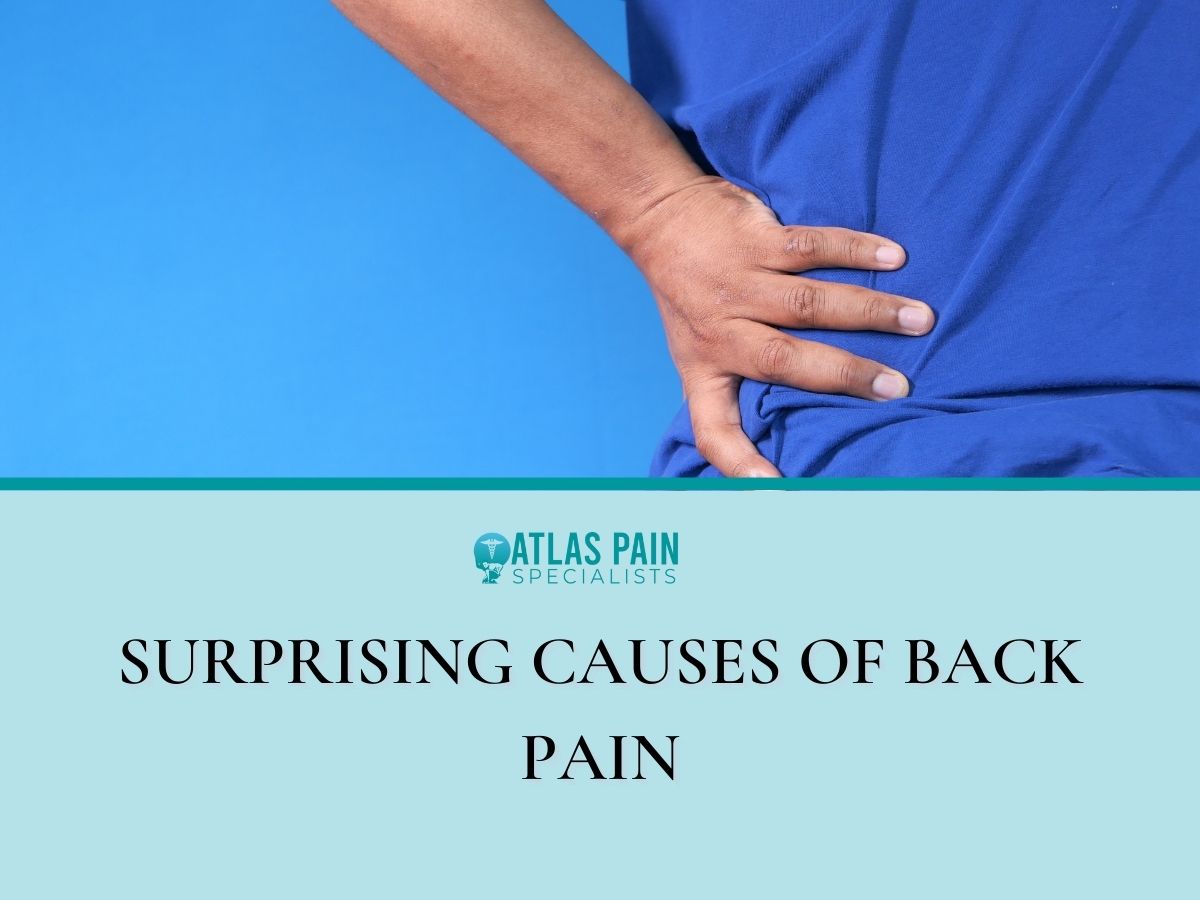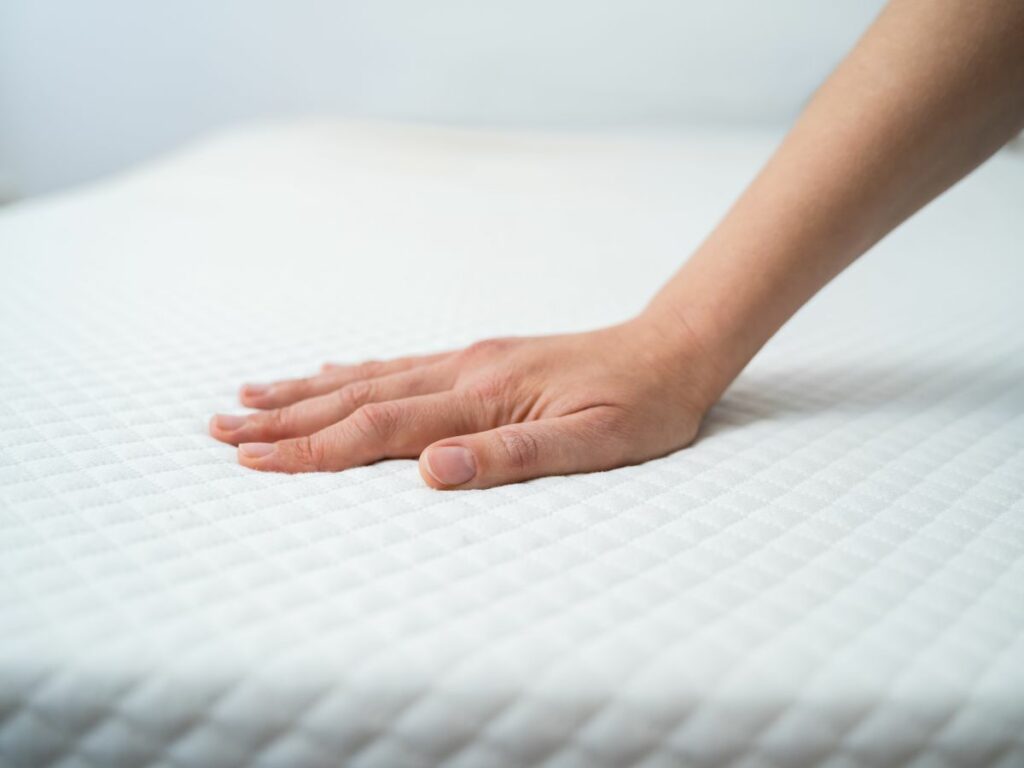

Surprising Causes of Back Pain
Whether chronic or acute, back pain can negatively impact your quality of life. It can make laying, sitting, and standing unbearable, and keep you from doing many of the activities you enjoy. When pain occurs in the body we must determine where it’s coming from.
If you’ve had an accident or injury the cause of your pain is easy to identify, but if you haven’t injured yourself, you may be wondering where it’s coming from. Here are a few surprising causes of back pain.

Your Mattress
If your mattress is too old, too soft, or too firm it could be causing both morning stiffness and all-day neck and back pain. However, even with the ideal mattress for you, you may need to utilize specialty pillows for your head, hips, and back.
One of the challenges with identifying the ideal mattress is that you and your partner may not have the same physical needs.
So, consider investing in a bed with individual firmness controls and/or raises at the head and feet. This way you and your partner can both achieve the support you need to sleep comfortably.
If you continue to wake up sore, even with the ideal mattress, it may be your sleeping position. Generally, sleeping on your back is the most ergonomic way to sleep.
If you are a side or stomach sleeper it will take time to adjust to sleeping on your back.

Sitting Too Much
One of the reasons fitness wearables are so popular is because they motivate us to move more throughout the day, even if it’s just getting in more steps.
With many of us sitting for 8 or more hours at work and school, to and from work and school, and more when we get home for the day—we’re hardly moving at all. This can rapidly lead to acute and chronic pain.
To resolve this type of pain, aim to move more every hour. Even 5 minutes an hour of walking, standing, and gentle counter stretching can make a world of difference.
Yes, continue working out 4 or 5 days a week, but hourly movement during waking hours is essential. Also, upgrade to more ergonomic office essentials which we discuss more below.
Electronic Devices
In the United States, smartphone use rose to almost 4 hours per day in 2020. Since most of the time spent on our phone is in a head-down position to text, game, read, and engage on social media, smartphone use can cause stress on your neck and back.
Add to that your notebook and use your laptop or computer in any setting that is not ergonomic, and this can create significant pain.
The first thing you can do is ensure your desk is ergonomic to encourage proper posture. This includes your chair, chair and desk height, keyboard, and mouse.
If you can, invest in a standing workstation or a convertible workstation that allows you to sit and stand.
Also, consider sitting on a balance ball part of the day to activate your core muscles, which is essential for a healthy back. Finally, when on mobile electronic devices, raise the device so you are not constantly looking downward.
Poor Body Mechanics
We mentioned posture above, but let’s discuss body mechanics. Many of us do not sit or stand with proper alignment.
While it’s easy to just say “improve your posture”, your muscles, tendons, ligaments, and fascia may need to be retrained back into proper alignment. This takes time and is something Dr. Ormond can assist with.
In addition to general posture, you must ensure that you maintain proper form when working out, lifting heavy items, or performing any daily repetitive movements.
If you regularly lift heavy items, invest in a back brace to further protect your back.
Your Wardrobe
Yes, that’s right—what you are wearing may be contributing to your back pain. Below are the most common culprits:

Footwear—high heels, flat sandals, and flip flops, worn-out gym or running shoes, or wearing the wrong shoes when standing on your feet all day long can lead to back and body pain. If you have supportive shoes and are experiencing back feet, and knee pain, it may be time to consult with a podiatrist.
Wallets—your back pocket is a convenient place to put your wallet, but if you sit for even an hour or two daily the uneven seated position causes misalignment that can lead to back pain. Switch to a front pocket wallet instead.
Purses & Bags—many of us carry multiple electronic devices, heavy beverage containers, and other daily essentials in our crossbody bag, backpack, or purse. Even children’s school essentials are heavy. Lighten your load and switch to ergonomic alternatives to minimize strain.
Weak Core Muscles
While carrying too much weight can lead to back pain, you can be at any size or weight and experience back pain due to weak core muscles. This cause of back pain is most common in those who are within their body weight, but who sit most of the day.
Or, in someone who is at a proper weight but does not exercise regularly or does not prioritize core strength. If you are carrying extra weight, particularly around your core, it may be a primary or contributing factor to your back pain.
Core strengthening is easy including planks and crunches, but even standing more during the day or sitting on a balance ball some or all of the day will activate and strengthen your core. The goal doesn’t have to be 6-pack abs, just enough strength to stabilize your body.
Not Sure What’s Causing Your Back Pain?
If you aren’t sure what is causing your back pain, it’s time to find out and begin a personalized treatment plan. Or if you’ve identified one of the surprising causes of back pain above as the most likely culprit, we invite you to schedule an appointment at the Atlas Pain Specialists in Phoenix, Arizona.
The first step will be to confirm or identify the root cause and create a pain management plan that will improve your quality of life. Reach out today to schedule your appointment!
About Dr. Sean Ormond



